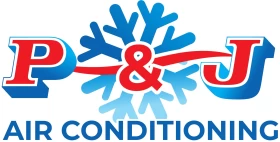Air conditioning is a modern-day comfort that many of us take for granted. Whether at home, in the office, or a car, AC systems work behind the scenes to maintain a cool and comfortable environment. However, have you ever pondered the operation of air conditioning? Let’s break it down into simple terms so you can better understand this essential technology. With HVAC services, you can ensure that your air conditioning system functions efficiently and reliably.
The Science Behind Air Conditioning
At its core, air conditioning is based on the principles of thermodynamics, heat transfer, and refrigeration. The main goal of an AC system is to remove heat from an indoor space and release it outside, leaving behind cooler air. This process involves a cycle of compression, condensation, expansion, and evaporation.
Key Components of an Air Conditioning System
To understand how air conditioning works, it’s essential to know the main components that make up the system:
1. Refrigerant
Refrigerant is the lifeblood of an AC system. It is a chemical compound that absorbs and releases heat as it cycles through the system. Common refrigerants include R-410A and R-22.
2. Compressor
An AC system’s compressor is its central component. It compresses the refrigerant gas, raising its temperature and pressure before sending it to the condenser coil.
3. Condenser Coil
Located in the outdoor unit, the condenser coil helps release the absorbed heat into the outside air. The refrigerant turns into a high-pressure liquid in this stage.
4. Expansion Valve
The expansion valve regulates the flow of refrigerant into the evaporator coil, allowing it to expand and cool down before absorbing heat from indoor air.
5. Evaporator Coil
The evaporator coil is inside the indoor unit and is responsible for absorbing heat from the indoor air. The refrigerant evaporates, cooling the surrounding air, which is then circulated back into the space.
6. Blower Fan
The blower fan pushes cooled air into the ductwork and distributes it throughout the building, ensuring a consistent temperature.
7. Thermostat
The thermostat acts as the control system, allowing you to set the desired temperature. It signals the AC to turn on or off based on indoor conditions.
The Air Conditioning Cycle Explained
Now that we know the components, let’s go step by step through the air conditioning cycle:
Step 1: Absorbing Heat
Warm air from inside your home is drawn into the AC system and passes over the evaporator coil. The refrigerant inside the coil absorbs heat, causing it to evaporate into a gas.
Step 2: Compression
The gaseous refrigerant travels to the compressor, where it is pressurized and heated. This process prepares it for releasing heat.
Step 3: Heat Release
The hot, pressurized refrigerant gas moves into the condenser coil. Here, the outdoor fan helps dissipate the heat, allowing the refrigerant to cool and turn into a liquid.
Step 4: Expansion & Cooling
The expansion valve reduces the temperature and pressure of the liquid refrigerant as it goes through. It then enters the evaporator coil, where it absorbs heat again, restarting the cycle.
Step 5: Cool Air Circulation
As the refrigerant absorbs heat, the blower fan distributes cool air throughout the indoor space, creating a comfortable temperature.
Different Types of Air Conditioning Systems
There are various types of air conditioning systems designed to fit different needs and spaces:
1. Central Air Conditioning
Ideal for large homes and commercial spaces, central AC systems use ductwork to distribute cool air throughout multiple rooms.
2. Ductless Mini-Split Systems
These systems are great for homes without ductwork. They consist of an indoor air handler and an outdoor condenser, offering zoned cooling.
3. Window Air Conditioners
Compact and easy to install, window ACs are popular for cooling single rooms or small spaces.
4. Portable Air Conditioners
These mobile units can be moved from room to room and are a flexible cooling solution.
5. Hybrid Air Conditioners
A hybrid AC system switches between electricity and fossil fuels to maximize energy efficiency and reduce costs.
Benefits of Air Conditioning
Aside from cooling your space, air conditioning offers several other benefits:
- Improves Air Quality: Filters out dust, allergens, and pollutants.
- Enhances Comfort: Maintains a consistent indoor temperature.
- Prevents Overheating: Keeps electronic devices from overheating.
- Increases Productivity: It creates a comfortable work environment, boosting efficiency.
- Promotes Better Sleep: A cool room can improve sleep quality.
Conclusion
Understanding how air conditioning works helps you appreciate the technology that keeps you cool and comfortable. Whether it’s central AC, ductless systems, or portable units, each system follows the same fundamental principles of heat absorption and release. Regular maintenance, such as coil cleaning and refrigerant checks, ensures efficiency and longevity. At P & J Air Conditioning LLC, we provide expert HVAC services to keep your cooling system running at its best.
FAQs
1. How frequently should my air conditioner be serviced?
It’s recommended to service your AC at least once a year to maintain efficiency and prevent breakdowns.
2. What stops the cooling of an air conditioner?
Common reasons include a dirty filter, low refrigerant levels, a faulty thermostat, or compressor issues.
3. Can I clean my AC coils myself?
Yes, but professional cleaning is recommended to ensure thorough maintenance and avoid damaging components.
4. How can I improve my AC’s efficiency?
Regular maintenance, cleaning filters, sealing ducts, and using a programmable thermostat can improve efficiency.
5. What size AC unit do I need for my home?
The square footage, insulation, and temperature of your house all affect the appropriate size. A professional can help determine the best fit.
